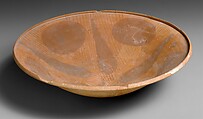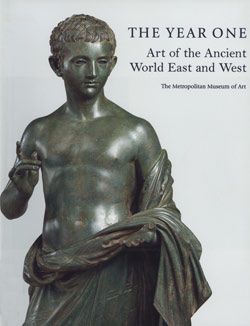Open bowl
Not on view
This bowl was excavated at Tawilan ('Ain Musa), northeast of Petra. The interior decoration is divided into five segments, each marked with hatching, that meet at an X in the center. An abstract leaf is painted in the center of each segment, and large ovals are painted over the lines dividing the segments. The bowl has a rounded bottom and an inverted rim. Its shape, its dark red-orange color, and its decoration, a radial, rotational design limited to two abstract motifs set against a hatched background, all point to a date in the first century A.D.
The very thin painted ware so closely identified with Nabataean culture began to appear in the first century B.C. It reflects the influence of Hellenistic wares, but because its shapes, colors, and decoration are unique, it forms a distinct type and was recognized early on as an accurate indication of Nabataean presence. Found primarily in southern Nabataea, the pottery has also turned up in the ports of Oman and Yemen, along the eastern coast of the Arabian Peninsula, and along the Incense Route. Nabataean painted ware is usually decorated with floral motifs. It has been suggested that Nabataean painted ware was deliberately broken after use in religious ceremonies; the ware has also been connected with cultic meals for the deceased.
This image cannot be enlarged, viewed at full screen, or downloaded.




